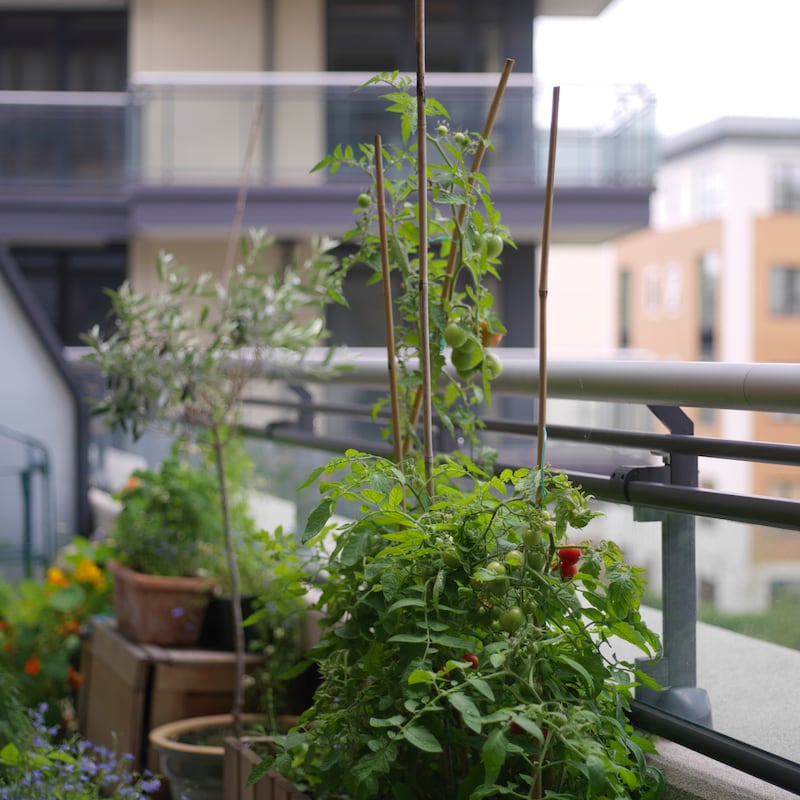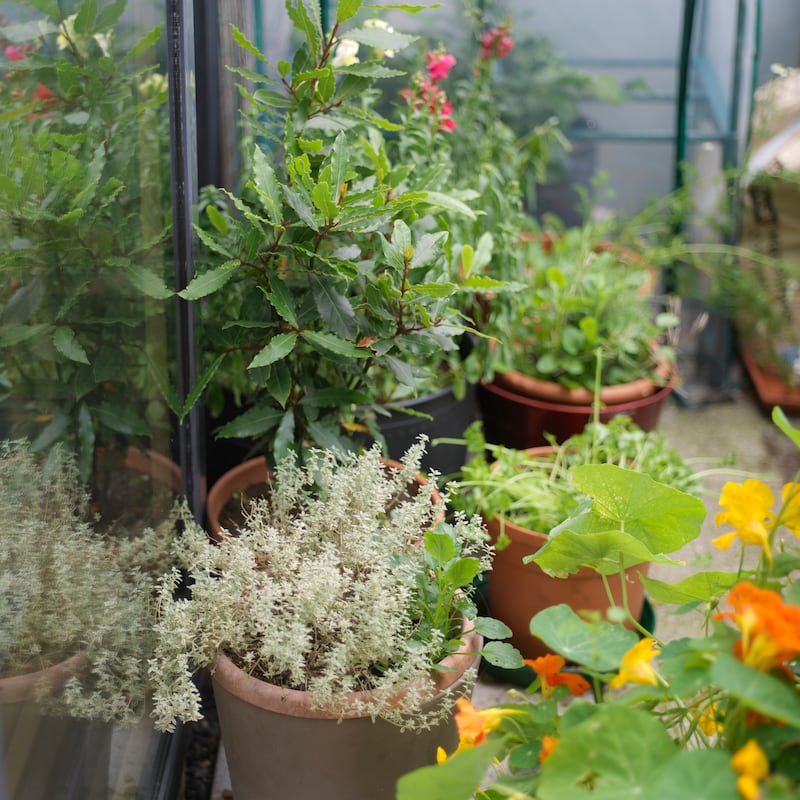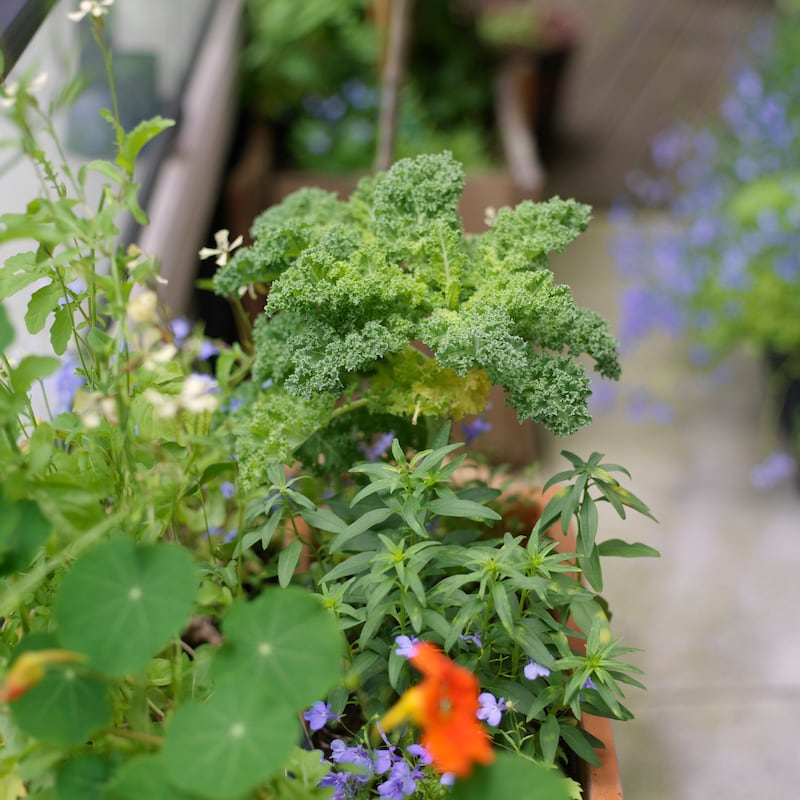My baby brother – a man who loves good food but has zero interest in gardening – is stranded in Strasbourg, pretty much confined to his apartment by France’s strict Covid-19 restrictions. His local supermarket, once a mecca for all kinds of tantalising foodstuffs, has already started to run low on many items, not least of which are fresh herbs and vegetables. “Grow your own”, I urge him, as I desperately google ways to get seed, compost and pots safely delivered to him. A few months ago he would have laughed at my suggestion. Not any more.
True, he has very limited growing space compared with those of us with our own gardens. But bright windowsills, balconies, sunny porches, flat roofs (as long as they’re suitable from a weight-bearing and planning permission point of view), steps, stairways and even the tiniest of courtyards can be put to great use to grow a wide array of container-grown plants.
The trick, when space is this tight, is to choose those crops that are the most versatile, nutritious, flavoursome and productive over the longest period of time as well as the most space-efficient, and to plant more closely than you typically would in the ground. Examples include herbs such as parsley, coriander, thyme, mint, chives, sage, oregano, dill, rosemary and basil; fast-growing leafy vegetables such as rocket, cut-and-come-again salad leaves, lettuce, oriental leaves, kale, perpetual spinach and chard as well as certain highly productive crops including dwarf French beans (try varieties Annabel, Safari, Stanley, Masterpiece and Canadian Wonder), dwarf runner beans (look out for Hestia), courgettes (ideally one of the spineless varieties such as Midnight or British Summertime), beetroot (cylindrical types such as Alto and Cylindra), chillies and bush-type tomatoes (the tumbling types in particular are perfect for hanging baskets). Many of the leafy types of herbs and vegetables listed above can also be succession-sown from now until early autumn to extend the cropping period and will do okay in light shade. But keep the sunniest, most sheltered spots for heat-lovers such as tomatoes, chillies, basil, rosemary and thyme.

Hanging baskets
Another tip is to maximise use of vertical growing space by using hanging baskets, tiered containers, stepladders (to mount containers), and by growing climbing varieties. Examples include climbing French beans (Cobra, Helda and Hunter are all good choices), runner beans (look out for Enorma and Firestorm) and mangetout peas (try Oregon Sugar Pod, Sugar Snap and Shiraz).
Most fruit crops need a lot of sunlight and very regular watering/feeding but it’s well worth growing strawberries in pots, especially the alpine types or the semi-alpine Mara des Bois.
If you're considering growing fruit trees, these need a large, wide container or tub (60cm) with a minimum depth of 45-60cm and must be self-pollinating varieties (when growing only one tree) on a very dwarf rootstock. Suitable kinds include the heavy-cropping Minarette range of dwarf fruit trees, which are columnar in habit, reach an average height of only 1.8-2.4m and can be grown as close as 60-90cm apart, or the Irish-bred Coronet range of miniature fruit trees (coronet.ie).

Yet another factor to consider is the quality of the growing medium that you use, which is crucial. Bear in mind that ordinary garden soil isn't suitable as it's too heavy and too prone to capping and compaction. While a good soil-based John Innes compost is heavier than a peat-based one, it has the advantage of being more moisture-retentive, meaning there's less risk of your pots quickly drying out or even blowing over on a windy day. For best results add a few handfuls of slow-release organic fertiliser pellets , mixing them in well before planting. Alternatively, some Irish suppliers are offering on-site delivery of multipurpose, screened compost in 1-cubic metre bags (see last week's column for details). If this is too much for your needs, consider pooling a delivery with a like-minded neighbour. To keep your container-grown plants happy, healthy and productive, it's also important to keep them regularly watered and to give them liquid feeds every 10-14 days during the peak growing season.

Contain yourself
Give some careful consideration to the size and depth of the containers you’re using. The larger the pot, the greater its capacity to retain water while vulnerable root systems are also more protected from any extremes of temperature. Conversely, the larger the pot, the heavier it will be and the more precious growing space it will take up. At the same time avoid very small or shallow containers, which are too vulnerable to extremes of temperature, dry out too easily and aren’t deep enough for greedy root systems; a minimum depth of 30cm is best.
To protect vulnerable root systems, try to avoid using porous terracotta containers which also dry out very easily, while concrete or wooden containers will add an extra burden of weight. Instead it’s best to use plastic or lightweight fibreglass containers, making sure that they always have a sufficient number of drainage holes at the base. Many common household items can also be upcycled for this purpose, from old plastic dustbins to larger food and biscuit tins (just make sure to clean them thoroughly before use).
Last but definitely not least, try to find space for a few edible flowers. Examples suitable for growing in containers include any of the more compact varieties of dahlia (whose tubers are also edible), roses, pot marigolds and nasturtiums. Not only will these encourage pollinators to visit (you’ll need these to pollinate your fruit and vegetables) but these edible blooms can also be used as a pretty garnish or to add pretty pops of colour to salads and summer drinks. They’ll also serve another vital purpose, of course, which is to bring you some joy, something we’re all in need of during these troubling times.
Useful resources
RHS Grow Your Own: Crops in Pots – with 30 step-by-step projects using vegetables, fruit and herbs (Royal Horticultural Society Grow Your Own) by Kay Maguire (available as Kindle Edition): verticalveg.co.uk, the website of British gardener and author Mark Ridsill Smith













